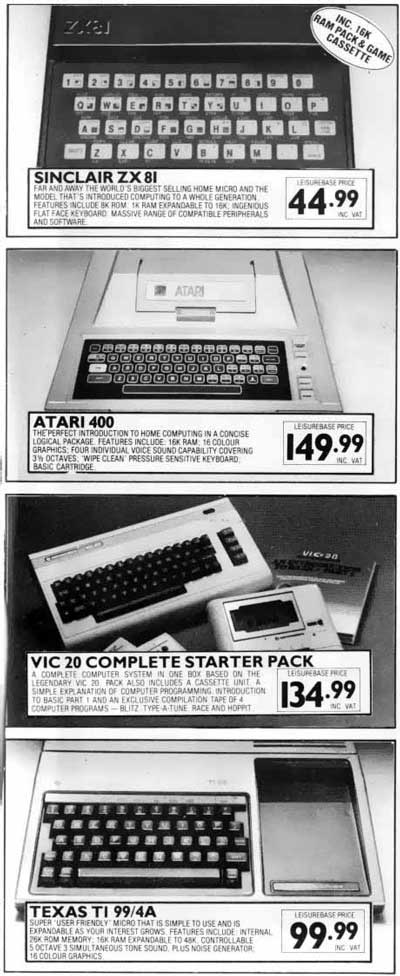 And
here 's the b-list, the also-rans, the has-beens, proud in their decline,
the never-weres, dead before they reached the operating table.
And
here 's the b-list, the also-rans, the has-beens, proud in their decline,
the never-weres, dead before they reached the operating table.The ZX81 had revolutionised the home computer market in the UK in 1980. It was the sequel to Sinclair's ZX80, a mail-order machine which was too hobbyist for most. The ZX81, however, was sold in actual shops - WH Smiths, Boots, Currys and so forth - and was just powerful enough to run games, although the graphics were restricted to character blocks. The simple novelty of being able to do sums on the television and the low price was a powerful incentive to buy, as was an array of marketing hype, from promises that a home computer would educate your kids to the dubious claim that a ZX81 was powerful enough to run a nuclear power station. This latter claim was met with ridicule, although it was not as ludicrous as it sounds, as many 'critical' applications - jet fighter avionics, satellites, and, yes, nuclear power stations - use simple processors and as little code as possible, so as to avoid the bugs that creep in when complexity is added to a system. Until 1999 the Hubble Space Telescope's computer was based around a specially-toughened Intelt 80386, perfect for playing Civilization but probably not for Doom.
The ZX81 had only 1K of memory, expandable to 16K with a large plastic RAMpack which connected only tenuously with the edge connector. It was sold in America as the Timex/Sinclair 1000, but due to the fact that Americans earned lots of money then and now, they bought better machines instead.
The ZX81 brought computing the masses, whilst the Spectrum kept it there. Note how the picture gives the impression that it's as big as the other machines - in reality, the ZX81 is roughly the same size as a DVD box, but slightly wider.
As for the Atari 400, it was roughly equivalent to the 16K Spectrum, but for the price of a 48K Spectrum. The 800 from the previous page was much better but, at £299, it was uncomfortably approaching the BBC Micro. More on the Beeb later.
The VIC 20 (named after its 'Video Interface Chip') was Commodore's sequel to the PET, and the direct ancestor of the C64. In 1983 there was absolutely no reason to buy one in favour of the latter. Bizarrely, Commodore decided to revive the machine, as the Plus 4, a few years later, except that it was incompatible with existing VIC 20 software.
The Texas Instruments 99/4A had been a big hit in the US in 1981, competing for dominance of the lower end of the market with the TRS-80, although by 1983 it was a spent force. The large black area to the right of the keyboard is mostly for show, although it has a cartridge slot - cartridge slots were very popular at the time The C64 had one, the Spectrum's 'Interface 2' had one, and so did the Atari ST, a 16-bit machine which would held to bury the computers on these two pages for good.